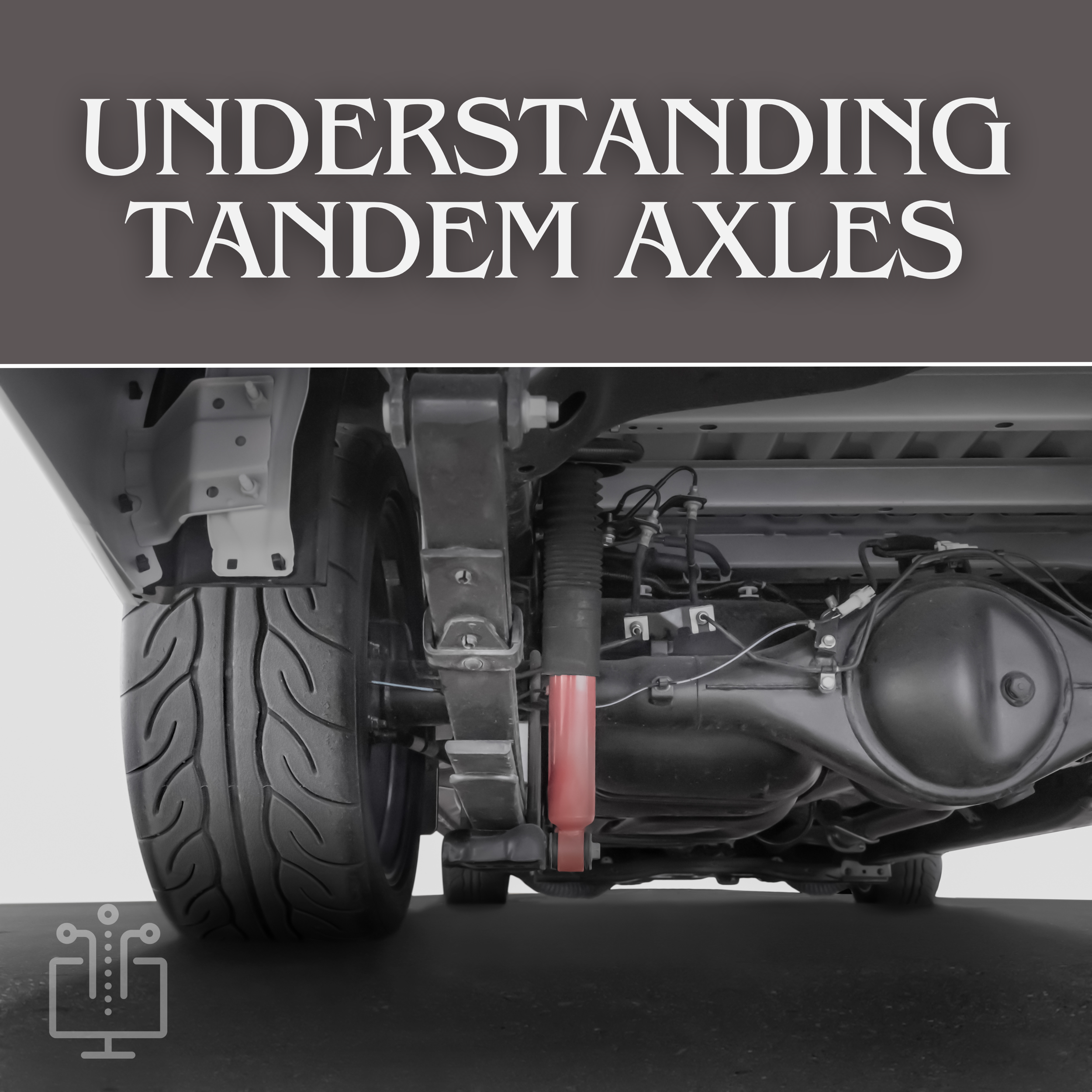The Backbone of Heavy Hauls: Understanding Tandem Axles in Trucking
In the world of trucking and transportation, where every pound counts, tandem axles play a pivotal role. These pairs of axles, strategically positioned near the rear of tractor-trailers, are far more than mere wheels—they are the backbone of heavy hauls. In this blog post, we'll delve into the significance of tandem axles, their functions, and how they contribute to safer and more efficient transportation.
What are Tandem Axles?
Tandem axles, often referred to simply as tandems, consist of two axles positioned close together. They're like the dynamic duo of the trucking world, working in unison to support the weight of the cargo and ensure the vehicle remains within legal weight limits. Understanding their roles requires a closer look at two key functions:
Weight Distribution: Tandem axles are masters of weight distribution. When a trailer is loaded, the weight of the cargo is not evenly distributed. Tandems allow truckers to adjust the position of these axles, spreading the load more evenly and optimizing weight distribution for safer handling on the road.
Compliance with Weight Limits: Legal weight limits are imposed to ensure road safety and infrastructure integrity. Tandem axles allow truckers to comply with these regulations by adjusting the position of the axles to distribute weight appropriately. This prevents overloading on specific axles and ensures that the truck doesn't exceed weight limits.
How Tandem Axles Work
Tandem axles are not static; they are adjustable. This adjustability allows for fine-tuning the weight distribution to match the cargo's weight and dimensions. The adjustment is typically made by sliding the axles forward or backward, changing the distance between them. Here's how it works.
Forward Position
When the axles are moved closer to the front of the trailer, this shifts more weight onto the front axle and less on the rear. This is useful when the cargo is heavy towards the front.
Rearward Position
Conversely, moving the axles towards the rear of the trailer shifts more weight onto the rear axle. This is helpful when the cargo is heavy towards the back.
Properly Adjusted Tandem Axles Contribute to Safety and Efficiency
Road Safety
Even weight distribution reduces the risk of accidents, such as fishtailing or rollovers, which can occur if too much weight is concentrated in one area.
Infrastructure Preservation
Complying with weight limits helps protect roads and bridges, extending their lifespan and reducing the need for costly repairs.
Fuel Efficiency
Well-balanced weight distribution improves fuel efficiency, reducing costs and environmental impact.
The Backbone of Heavy Hauls
Tandem axles are unsung heroes in the trucking industry. They enable the efficient and safe transport of goods by ensuring that weight is distributed evenly and that trucks comply with weight regulations. The next time you see a tractor-trailer gracefully navigating the highway, remember that behind its smooth operation lies the careful adjustment and teamwork of tandem axles.


